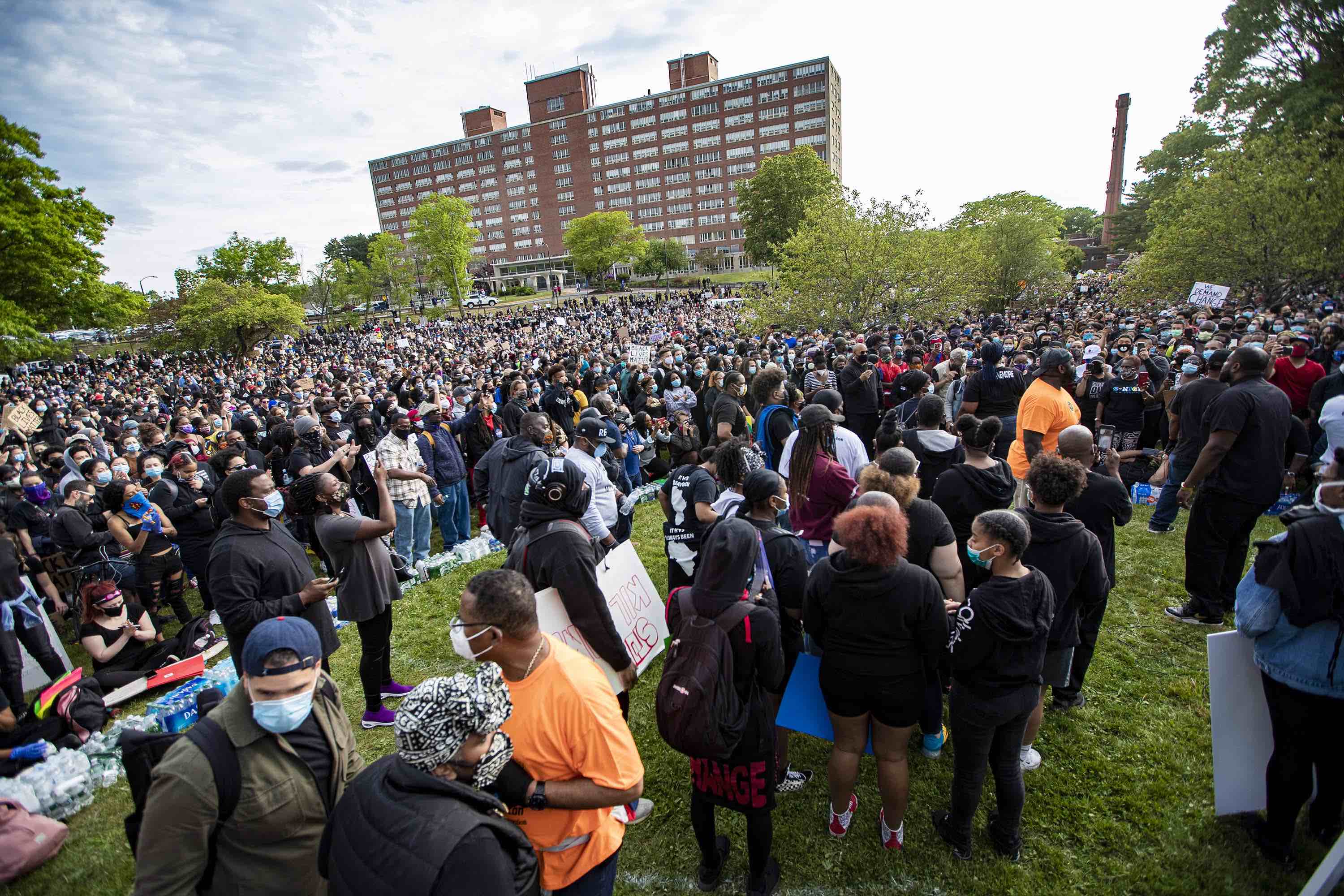Solidarity National Committee
Posted June 5, 2020

The protests against police violence that have been sparked by the police lynching of George Floyd have now entered their second week and have involved hundreds of thousands of mostly youthful, often multiracial protestors in large and small cities throughout the country.
Many of these overwhelmingly, peaceful demonstrations have been met with mass arrests and police repression. Governors have called in National Guard units, while Donald Trump berates governors who balk as “weak” and threatens to send in the armed forces.
This violence is an extension of the police violence that took the life of George Floyd and, more generally, the state violence visited on Black and other people of color on this continent over the last five hundred years.
The repression of peaceful protest is also a serious attack on our democratic right to assemble. The arrest of journalists reporting on the protests, with encouragement from the White House, and reports that internet access is being cut off in areas where protests are occurring, is an ominous threat against free speech.
The protestors have had to weigh the need for social distancing against the need to protest racist violence, during a pandemic which continues to rage with particular virulence in communities of color. That millions have chosen to protest despite the risk is a powerful testimony to the depth of pain and anger felt in the Black community.
The nationwide and often multiracial character of these protests indicates a breadth and depth of antiracist sentiment not seen in previous uprisings against racist police violence. It shows the potential for the emergence of a mass antiracist movement of unprecedented proportions. In the days and weeks ahead, antiracist activists will have the opportunity to discuss, debate and reflect upon the connections between police violence and the social structures that make them possible, and the way forward for the emerging mass antiracist movement.
Systemic Racist Violence
The helicopters, sophisticated military equipment, and even tanks that have been used in police confrontations with protestors have terrorized Black people for years. Much of this expensive hardware has been acquired as part of the racist “war on drugs,” which fueled mass incarceration to the point that 25% of the world’s incarcerated people are in the U.S. African Americans convicted of nonviolent offenses constitute an outsized proportion of the incarcerated.
The pent-up anger expressed in the streets reflects the oppressive structural racism of U.S. capitalism. Endemic police repression of communities of color is accompanied by intertwining structures of capitalist and state exploitation, racist housing policy, all exacerbated by several decades of neoliberal social policy that have hit people of color especially hard.
Vastly underfunded schools and massive unemployment are part and parcel of the system of racist violence that oppresses Blacks as people of color and as workers. The notion of a “school to prison pipeline” for Black people captures the connections between underfunded schools, police repression and mass incarceration, and gives context to calls to “defund” the police.
An international anti-racist struggle
Demonstrations against Floyd’s murder and in solidarity with the antiracist struggle in the US have taken place throughout the world, often using the same slogans seen in US demonstrations. Protestors chanted “I can’t Breathe” in Sydney, Australia and “Black Lives Matter” banners have appeared in demonstrations in several European countries. Protestors have often linked police violence in their countries to racist violence in the US.
As millions march against racist police violence throughout the U.S., 20,000 people defied a government curfew in Paris, France, on June 2 to protest the police murder of Adama Traoré, a son of African immigrants killed by police on his twenty-fourth birthday in 2016 under conditions chillingly similar to those under which George Floyd was killed.
The demonstrations which have taken place in several French cities have been led in large part by young women from the working-class and immigrant communities of color, who suffer daily police violence in segregated housing projects located far from urban centers.
These demonstrations also reflect processes of colonialism, imperialism and oppression that have been an integral part of capitalism for centuries. Immigrants and their children from former French colonies in north and sub-Saharan Africa suffer much of the same oppression as Blacks in the U.S.: daily police brutality, inferior public schools, and discrimination in the labor market, reflected in rates of unemployment greatly higher than among whites.
Apartheid-like polices of social exclusion and neoliberal capitalism have produced impoverished urban and suburban centers of misery from the U.S. “ghettos,” to their French equivalents, to the Brazilian “favelas,” where millions of poor people, usually of color, endure lives of poverty and violence.
The struggle against racist police violence begins with defending the right to protest free from police violence and the use of tear gas, pepper spray, and mass arrests.

Comments
One response to “Stop Police Violence against Antiracist Protestors!”
Racist police must be stopped, arrested immediately and held accountable for their actions. The video footage being documented showing their brutality is appalling, offensive, immoral, corrupt and criminal. This has been going on for far too long, and everyone everywhere should stand together in solidarity to end racism everywhere. Black Lives Matter!